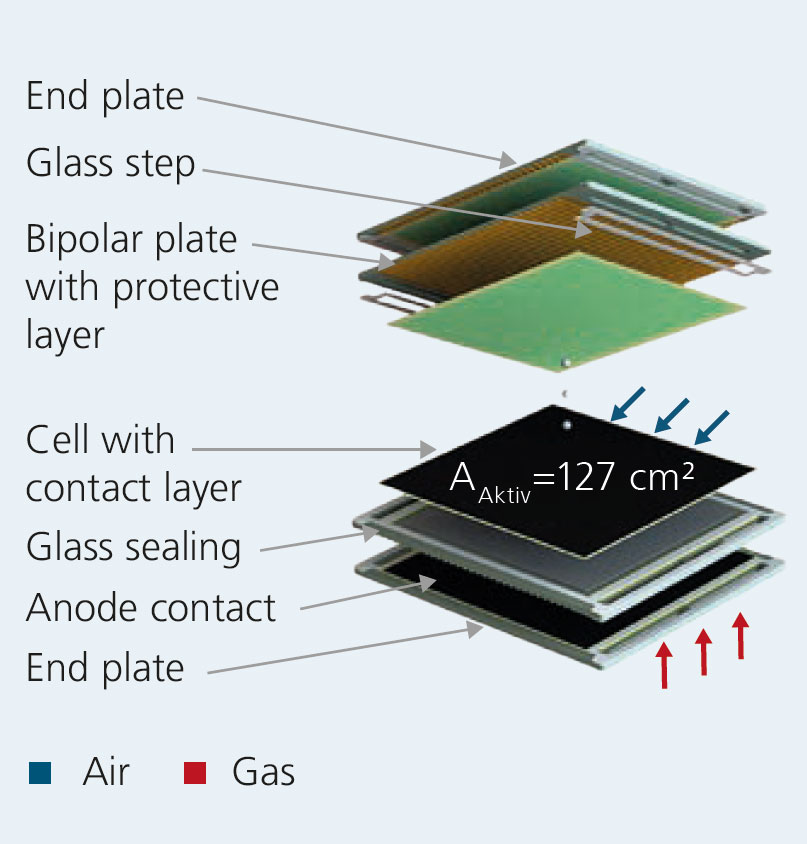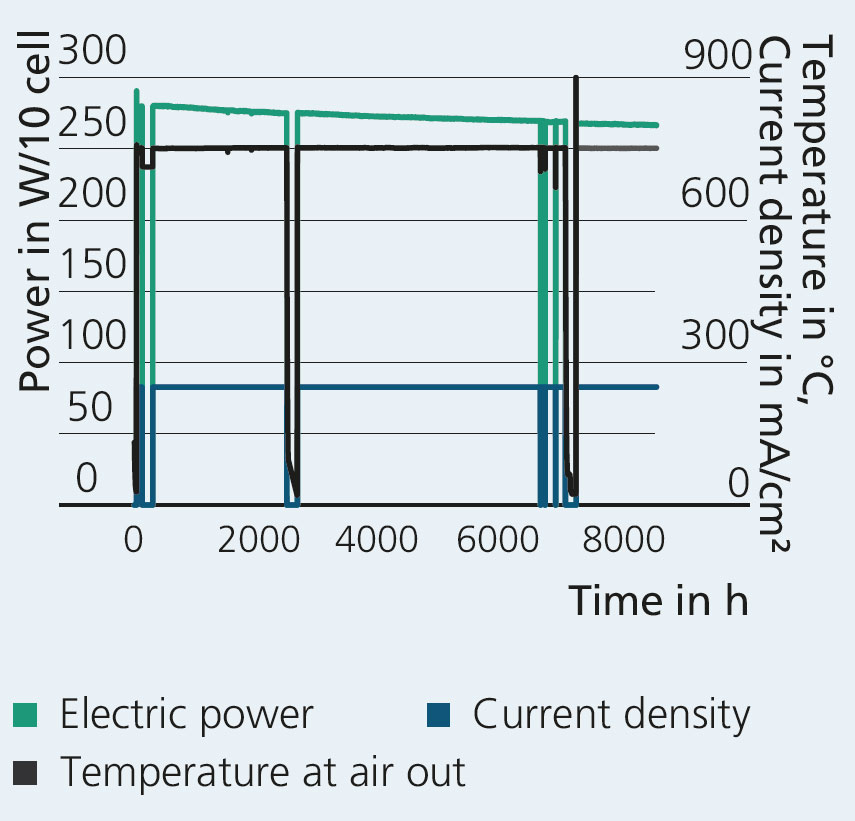
Degradation study on SOC stacks
Current research

For years, Fraunhofer IKTS has been putting a lot of effort in developing solid oxide cells (SOCs). Recently, the focus has increasingly been on their use in high-temperature electrolyzers (SOEC). The SOC cells and stacks developed at IKTS, with interconnectors based on chromium and electrolyte-supported cells in MK35x design (top figure), can be operated reversibly, i.e. in electrolysis mode and in fuel cell mode. Thus, they are simultaneously the key components for converting excess electricity into synthetic fuels as well as for efficient conversion of these fuels back into electricity. In recent years, research activities have focused, above all, on lowering costs and degradation rates. While the technology for the manufacturing of SOC cells and stacks has already been successfully transferred to industrial parners, the manufacturing processes continue to evolve at IKTS with the aim of reducing production costs. Such savings will only materialize once production volumes increase. Accordingly, many SOFC and SOEC projects are working to expand the application spectrum of SOC systems in order to boost production numbers. Long-term stability is another important research goal for SOC stacks. Determining degradation rates is one of the main tasks of component development, achieved mainly by investigating cells, protection layers, glass sealings and metal-ceramic contacts. The current determined degradation rate of ΔP/P0 < 0.7 %/1000 h at a constant electric current of 35 A in SOFC mode (bottom figure) requires a high-precision measuring system. It is especially difficult to keep the measurement parameters on a constant basis over several thousand hours. This can only be achieved by excellent lab technology and continuous maintenance. The temperature measurements are highly influenced especially by thermocouples and gas flow control.
The standard deviation of the measuring devices leads to about 1 % uncertainty. It is possible to get sufficiently accurate performance figures through referencing and calibration. By doing this, the degradation can be determined reliably after 3000 h of testing, and it is possible to provide lifetime forecasts for more than 20,000 hours. With the test conditions being equal, stacks in degradation cause a rise of temperature through increased heat development. The effect of temperature on stack performance is determined through simulations and measurements, because it is not possible to compensate this heat development by modi- fying test conditions. Standard test protocols have to be established for the different fields of application for fuel cells and electrolysis operation. Simulating and measuring temperature distributions contributes to understanding the monitored phenomena as there is a wide difference between exothermal SOFC operation and thermo-neutral SOEC operation. The knowledge of how the power losses in a stack are divided is based on many stack analyses, validated models and numerous single measurements on stack components. This knowledge enables the focused development of components, which can be validated with standardized test protocols.
Services offered
- Test of stack components under real conditions
- Stack and stack module development for SOFC/SOEC systems

